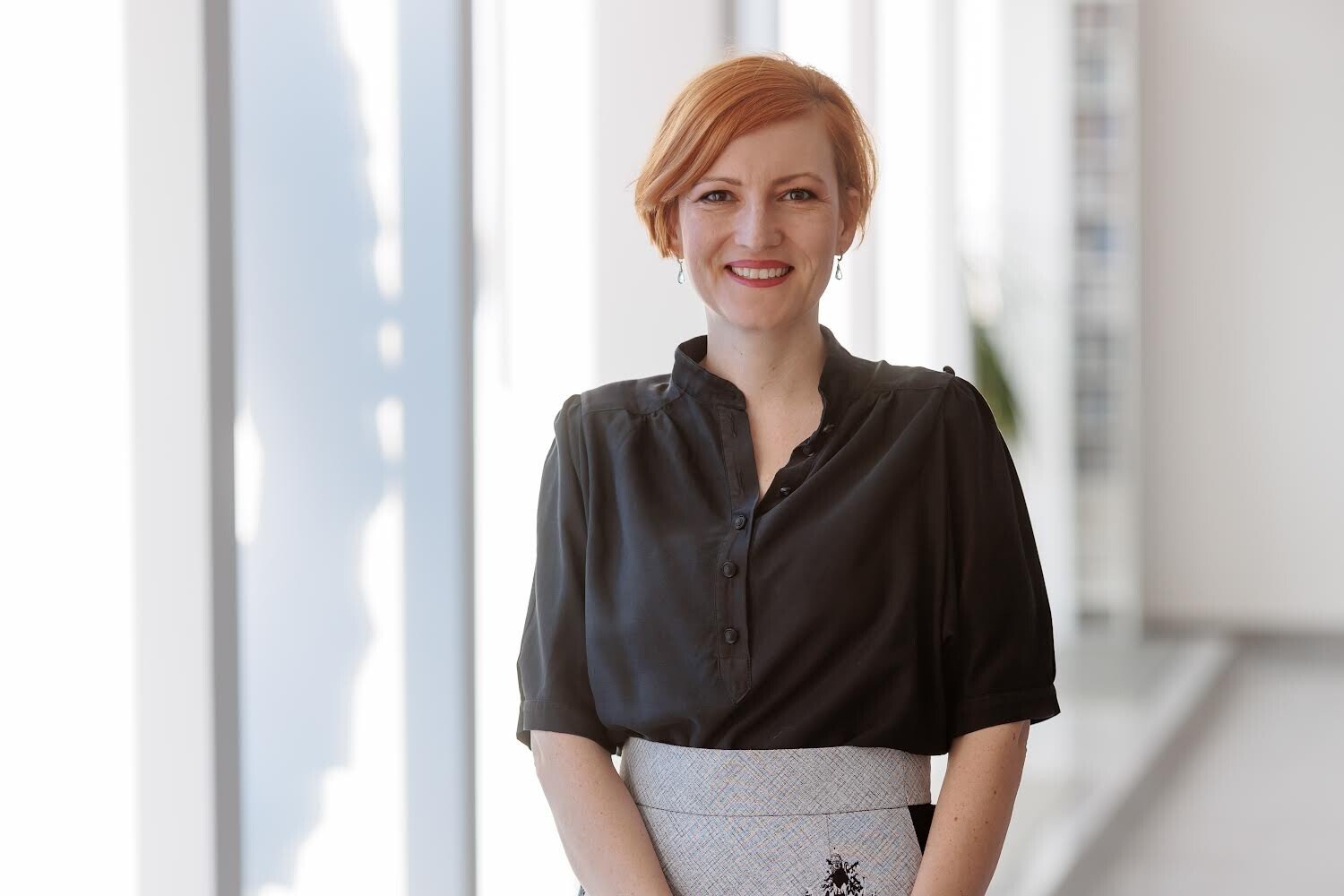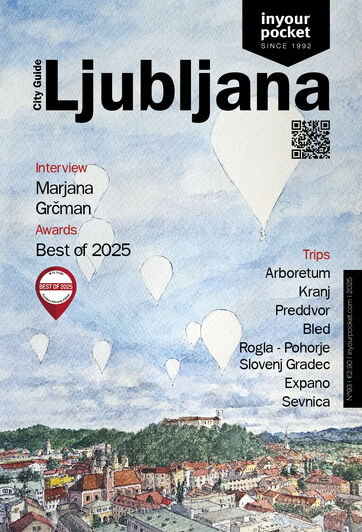
Hi Asta, how’re you doing?
Fine, thanks for asking. And how are you?Not bad! You know when they asked me to interview you, I kind of freaked out a little. You're a minister, a woman minister for that matter, a woman minister of culture for that matter and well, all this sounds quite big, important and »cultured« if I may use the slightly ritzy word. It's like you've got it all—class, brains, and that whole package of what it takes to be a major cultural influencer. So, here's what I'm curious about: considering there's a lot of space for subversiveness within culture, do you sometimes struggle with the culture of your position? What are the challenges, the bores, and the thrills of your daily grind? And most importantly, do you ever allow yourself to be a little less »cultured« ?
Sexism and culture of violence, harassment and inequality is unfortunately still present in our society, and is very linked with class inequality. Culture and art in Slovenia is unfortunately very precarized. Therefore an important part of our collective challenge at the ministry remains the struggle for better working conditions for all workers. And that is a full time job, filled with everyday thrills, through which we try to remain focused and sharp. Celebrating the immense successes of our artists and art institutions is part that makes all the efforts worthwhile.
What I'm trying to say is that for many of us, culture and art are something fun and free, something extra, apart from "real life," where you can enjoy something beautiful, let go, push boundaries, contrast, and challenge existing ideas about how things are and should be. But this is your field of work and well, you kind of represent it all, so you have to take it seriously. What then, do you do for fun?
One of the first commitments I made when I became the minister of culture was that I will continue to visit and support artists as I did before, if not more. I believe that decision makers must be in touch with the terrain so I encourage all my coworkers to be present in the field, to learn about artists' difficulties and we all try our best to listen to their challenges, so we can better respond to the needs of the sector. And you cannot do that from your office. Luckily, being surrounded with art is also beneficial for one’s well-being, so I am honoured my work allows me to combine both.What kind of arts were you attracted to as a child?
My first passion, and profession, is art history, as I used to be a researcher and a curator, specialising in modern and contemporary visual art. Growing up, I was surrounded by creativity, as Slovenia inherited a very rich and wide-spread folk art network, connecting people in villages and small surroundings. Equally wide-spread institutions of small local cultural centres in the countryside allowed me, and generations before me, to see and experience art from other parts of Slovenia. I believe this is a tradition worth remaining. Culture must be accessible to everyone, especially those growing up and living outside of urban centres of power. This is why our team at the ministry is doing its best to decentralise culture around the country.
Do you ever find it difficult to take your daughter to a museum and, more importantly, keep her entertained and interested in what's going on?
I think she is perfectly capable of keeping herself entertained no matter the time or occasion (laughs). But I try my best to encourage her to enjoy art from a very young age, and through my work at the ministry, to enable other children to have equal opportunities to do the same. If you learn to enjoy art at a very young age, it is likely you will remain connected to it as an adult.
Now we're just doing a bit of burlesque here - museums and other cultural venues are much less boring than they used to be, with innovative ways to make collections interesting for visitors of all ages and backgrounds. Do you feel like the cultural scene in Slovenia is growing with the times? Do you feel like it's reaching out to its most difficult-to-reach audiences, like the young, the poor, or the otherwise marginalised?
Many museums and galleries in Slovenia have already implemented a range of approaches that allow visitors to experience art or cultural heritage rather than just passively view it. This is a constant process of development for all: government funded, locally funded and NGO institutions. In my role as minister of culture, I see audience development, outreach, inclusivity and accessibility programmes to be key parts of any cultural institution and at the ministry, we strive to encourage and cultivate a variety of such practices.
Do you feel like there is a good balance between formal, institutionalised art and underground, alternative art in Slovenia?
Challenge of every administration is not to intervene and try to control every aspect of art development. Some of today's most prominent artists rose from squats, autonomous cultural projects and parallel or even against the prevailing norms of art institutions. There should always be a space and understanding that these practices offer the more mainstream part of the culture both inspirations, and new methodologies, but also necessary awareness and criticism needed for the development of the entire cultural sector. Culture is an ecosystem, so we must encourage all parts of it in order to grow collectively.
There is a lot of noise about robots taking over and being present in language, photography, design, music, visual arts, maybe one day performing arts... What do you think about the development of AI in regards to culture and art?
AV: Sure, many of us have been chatting with ChatGPT and experimenting with image-creating tools, and it is not possible to ignore the future impact of algorithmic robots on artists and creative professionals. While we have been publishing our music, photographs, articles, and other creative content on online platforms and digitising our cultural heritage we never thought that we were also providing raw material to the algorithms. Generative AI is trained on our creative work and the owners of the platforms have once again privatised our data without informed consent. AI generated content may seem fascinating and impressive but there are human artists behind every AI generated image, song, or a poem. I believe that their work should be protected and compensated for. Furthermore, the public should be able to clearly recognise AI generated content.
What do you feel is unique about the cultural and art scene in Ljubljana at the moment, if we compare it to capitals of neighbouring countries like Vienna, Budapest, Zagreb?
Culture enriches the lives and well-being of people, no matter the form in which they take part in it. We must be aware of the dangers of gentrification, and try to encourage art and culture that exist within and with the local communities. As such they can be a vivid intersection of different experiences and knowledge, and not merely part of consumerism. International connections with our neighbouring regions give us additional inspirations. Such art may be localised, but is never local. I see a lot of such art in local communities in our region.
What festival or cultural event outside of Ljubljana do you really like visiting?
I am honoured to be able to take part in so many diverse events and festivals around Slovenia. Our task is to ensure they can continue to thrive through improved working conditions and accessibility for diverse audiences. During the unfortunate epidemic of COVID-19, we learned to discover nature in our regions, and I would like to encourage people to similarly continue to discover events, cultural heritage and productions around them as well. And of course, if I had to choose a place in which I try not to miss the major cultural events, I would of course choose my hometown of Šentjur.
Have you noticed the amount of events happening in Ljubljana, if not the whole of Slovenia, every summer starting from June? Should we make it a national holiday month so we can not work and just attend them all? Can you do that?
I actually can’t, but I would like to, regardless of the month (laughs). Diversity of art production is a good thing, and it addresses many different audiences, from the youngest to the oldest, and many tastes as well. We should be a society in which culture is not a business for the selected few, but affordable everyday activity for and of everyone. As with everything else happening around us, namely the destruction of the planet, we must of course also ask ourselves how to produce art and culture in a sustainable way in order not to exhaust both the planet, but mostly the workers.
Tell me, what's your favourite Slovenian film, if you have one?
I actually don’t have a favourite Slovenian film. I believe that Slovenian film production is doing an excellent job bringing diverse stories to the audiences throughout the world. In a small community, such as ours, I think we can be proud of a rich and plentiful basin of wonderful ideas that are masterfully transformed into great films with the support of excellent actors, script writers and film directors. There are a lot of diverse film festivals, also during the summer. So I think that everyone can find a Slovenian film to their liking.
When a friend from abroad visits, what part of Ljubljana do you take them to see as a must?
AV: Ljubljana has a rich architectural and cultural tradition, so no matter where you end up, you can either enjoy brutalist architecture or a lively community art centre, where you can find Plečnik’s architecture that is now part of the UNESCO World Heritage List and Metelkova - autonomous culture centre. The fact that you can discover art created in both Roman times and in this decade on every corner, makes Ljubljana and Slovenia a wonderful place to visit and live.
When it comes to gastronomy, what's one tip you always give to visitors?
Slovenia recently managed to successfully include beekeeping into UNESCO world heritage list. So I would definitely encourage them to try one of the several artisan products from honey, as this is one of the riches of cultural tradition in this region.
What gift would you give them to take home and remember Slovenia and Ljubljana by?
I always try to gift my guests with a product of Slovenian arts and crafts makers.
Picture this. It's a hot summer night and you have to choose between radical body trance dance with a DJ in Tivoli Park, a classical music concert at Kongresni trg, hunting for light installations scattered throughout the city, or maybe visit Ljubljana's Kiki Carne-ball. What's your pick?
Probably I am preparing new legislation with my colleagues (laughs), as we are finishing several important proposals for changes in our cultural model right now, and summer is an extremely busy time for us. I try to attend as many culture and art events as possible, my team and I strongly believe that we have to be connected with the scene, so we are regular guests at readings, exhibitions, concerts … Either way, I am happy we live in a region, where all of the above, and many other art choices are possible, and I will continue to do my best to create conditions for art and culture to thrive for the generations to come.
So, do you have any plans for tonight?
I’m actually spending time with my daughter tonight, and that is a time best spent.
Thanks a million for taking the time to chat with me. Take care, wishing you all the best and hope to bump into you at some cool event!





Comments